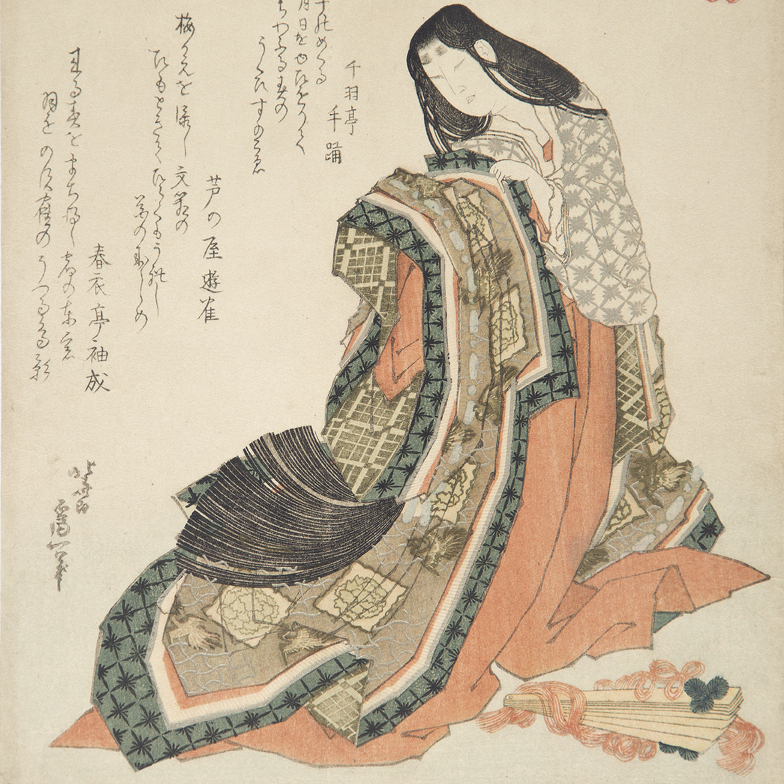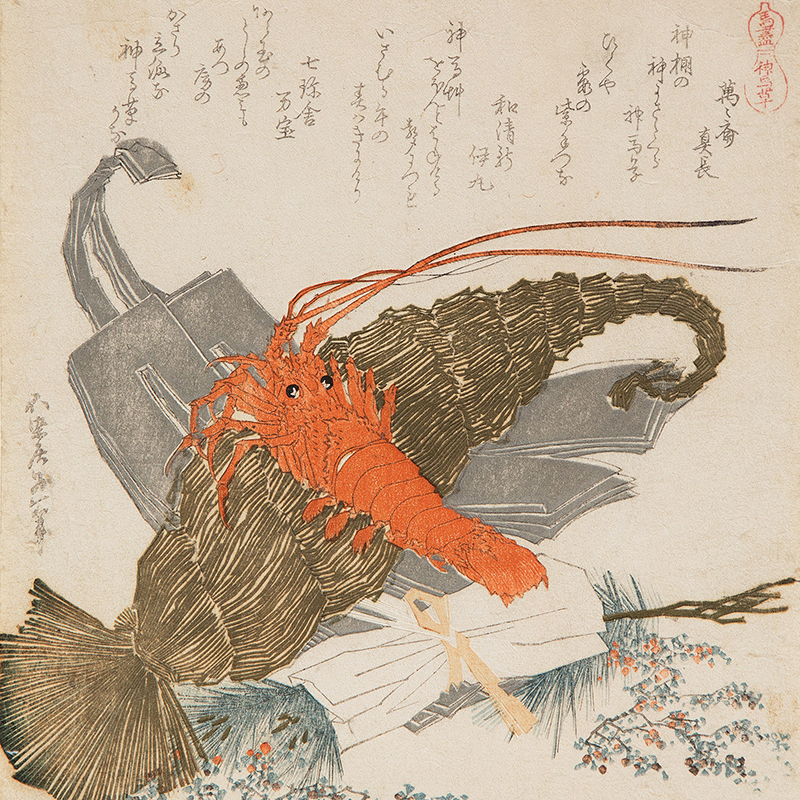Katsushika Hokusai
1760 - 1849
1822
Surimono, shikishiban, 207 x 181 mm
Signed: Fusenkyo Iitsu hitsu
Publisher: Yomogawa
Series: A Series of Horses - Umazukushi
Very fine impression, embellished with metallic pigments, silver and gold. Fine colour and condition.
The print depicts writing utensils: two doll-capped brushes and a portable brass writing set on a folded sheet of paper, in the foreground a sheathed knife and scissors. In the background a Yatate, a Japanese personal writing set in the shape of a pipe.
Poem by Chikushien Itoyori, which refers to Mount Arima, its hot springs and bamboo grass.
Mount Arima is like the rouge on a bamboo / Grass base used by the women at the bathhouse / rustling gently in the Spring breeze.
Another impression of this surimono, coming from the Hayashi collection, is published in Edythe Polster – Alfred H. Marks, Surimono: Prints by Elbow, Washington, D.C., 1980, no. 305, p. 273, illustrated.
Another one is preserved at the Rijksmuseum Amsterdam. Inv. no. RP-P-1958-299.
The Rijksmuseum impression has been published twice:
- C. van Rappard-Boon And M. Forrer, Hokusai and his school, Amsterdam 1982; cat. no. 43, p.35
- Forrer, Surimono in the Rijksmuseum Amsterdam, Amsterdam 2013; cat. no. 257, p. 139
Information on the master
Katsushika Hokusai, dominated the scene of the art of the Japanese print (Ukiyo-e) in the field of book illustration, drawing and painting. He was born in the Honjo district of Edo. His passion for art began at an early age; he was adopted by an illustrious family of artisans who introduced him to wood engraving. This influenced his career and at the age of 18 he entered at the studio of Katsukawa Shunso (1726-1793), who specialised in prints depicting the popular Kabuki theatre. Under the pseudonym of Shunro, around the 1780s, he got to know artists like Shigemasa (1739-1820) and Kiyonaga (1752-1815) who influenced his drawing of figures. Around 1790 he produced his first important prints which he signed Kako. He also produced fine Surimono. In 1797 he married and took the name Hokusai, becoming one of the foremost illustrators and artists of Japan. Among his most famous work are the ehon, books of images, as the 15 albums of drawings entitled Manga. The most celebrated of his prints series is The thirty-six views of Mount Fuji, early thirties. Amongst his many pupils: Shinsai, Hokuju, Hokuba, Hokkei, Shigenobu.
Other works of the master









